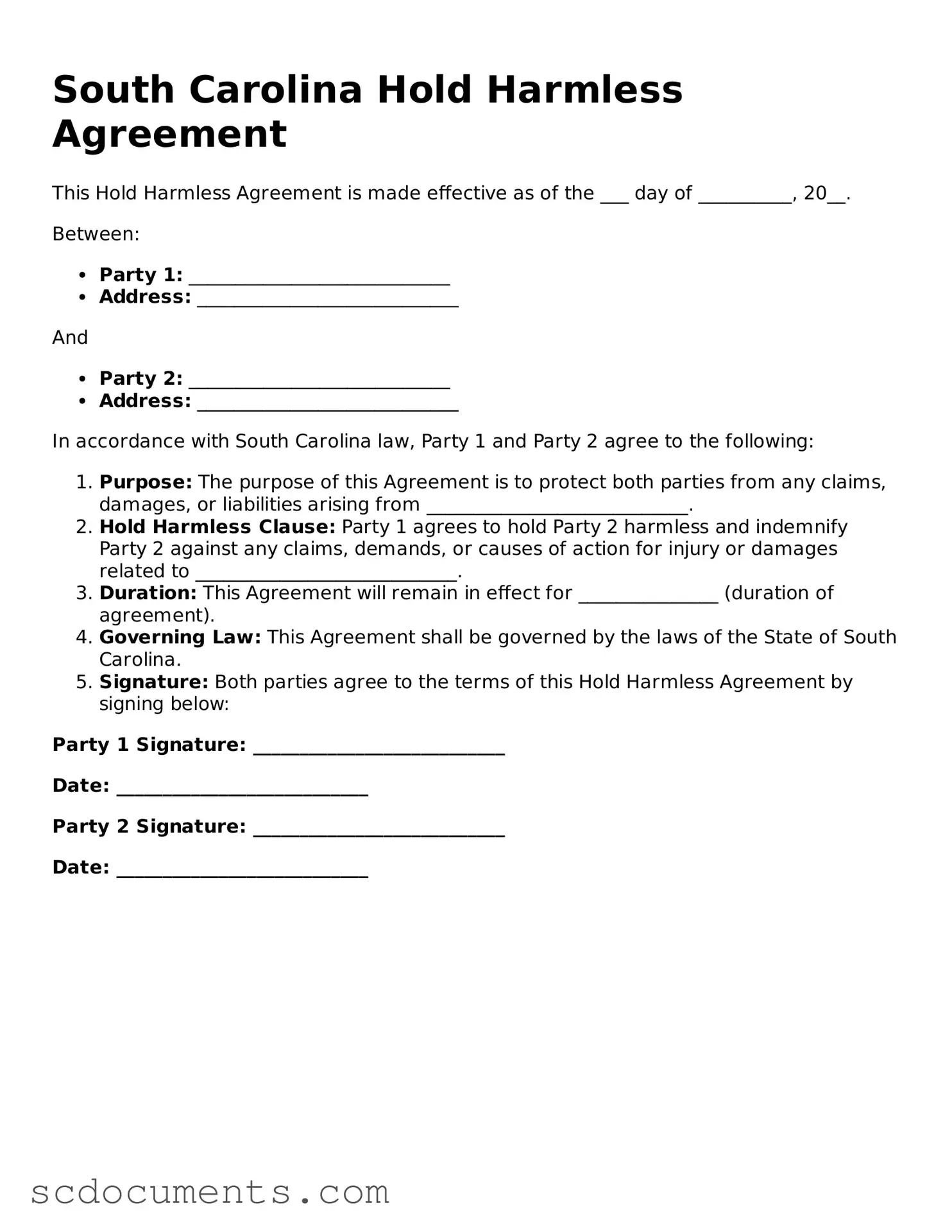Legal South Carolina Hold Harmless Agreement Form
The South Carolina Hold Harmless Agreement is a legal document designed to protect one party from liability for any damages or injuries that may occur during a specific activity or event. This agreement is crucial for individuals and organizations looking to minimize their risk exposure. Understanding its implications and proper usage can help ensure a safer experience for all involved.
Access My Hold Harmless Agreement
